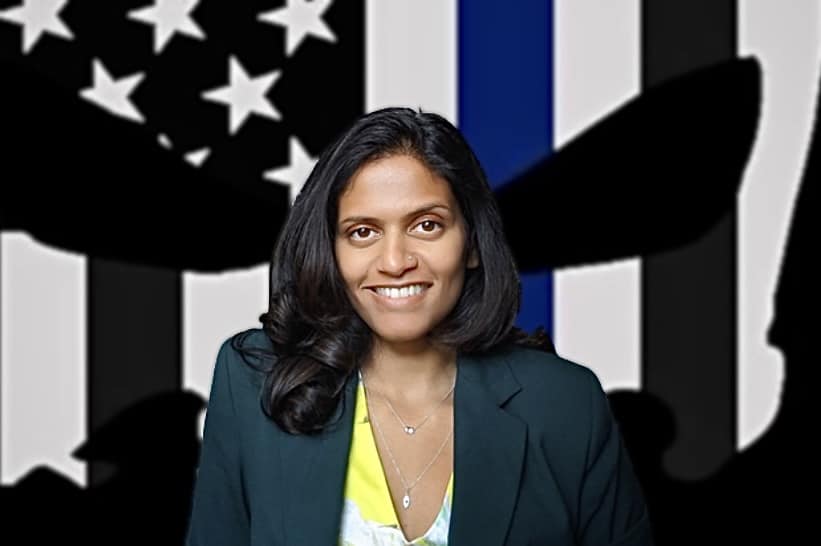Luke Cage, Jessica Jones, and The Punisher: How different Marvel superheroes express their rage
Associate professor, Menaka Philips, talks about her recent paper on race, gender, and violence in the superhero universe.
In 2020, Frank Castle, known as The Punisher from the self-titled Netflix series (2017-2019), became the new warrior logo of the American police. Law enforcement officers were spotted wearing the Punisher skull as a statement of their power over regular citizens during protests against police brutality following the murder of George Floyd.
In her recent paper, “Violence in the American Imaginary: Gender, Race, and the Politics of Superheroes,” Menaka Philips, an assistant professor of Political Science at the University of Toronto Mississauga, talks about how the American police twisted the meaning of The Punisher’s emblem. She writes that Punisher’s actions in the series are meant to critique the failure of the state, not support its violence. “In the comic book, they have cops coming up to Punisher and saying, ‘We love you, you’re awesome’. And he loses it. He’s like, ‘I’m not on your side. You’re part of the corruption, you’re part of the problem,’” shares Professor Philips in an interview with The Medium.
Professor Philips believes nothing can justify the desire of American police officers to reclaim a sense of authority. Although Punisher’s murderous violence is always excused in the series, this should not be the case in real life. “This cannot be a response to that kind of movement. It should be disturbing that it is,” observes Professor Philips.
Then how did this vigilante icon gain such an immense following among American—and even Canadian—police? “Punisher’s appeal lies in his unrestricted relationship to violence—a relationship guaranteed by his status as a white man,” wrote Professor Philips in her article for Political Violence At A Glance.
The character’s background makes his vigilantism acceptable to many audiences. In the 2004 action film, Punisher, an FBI agent transforms into a vigilante after criminals murder his family. He represents a loss of power, which creates the perfect excuse for his response to his tragedy.
Professor Philips calls the type of violence the character uses “unrestricted” because of how brutal it is on screen. And yet, his actions are always rationalized, not only by the people but also by the state. He has full access to such cruelty because he does not fear being judged or arrested for his killings.
The rationalization of violence granted to Punisher is rarely granted to minority heroes in the superhero universe. For example, in TV series Luke Cage (2016-2018), Cage, a Black Marvel superhero with super strength and unbreakable skin, approaches violence with caution. Despite also experiencing great trauma in the past, the way he is allowed to respond to his suffering is very different from Punisher.
“In his violence, Luke Cage is always contained. It’s rarely explosive. It’s almost never bloody. You never see him hurt anyone too much,” explains Professor Philips. The main difference between him and Punisher is that Cage is never forgiven by the state, despite actually doing good for the community rather than focusing on his personal agenda.
In her paper, Professor Philips calls Cage’s violence “sacrificial.” The superhero never engages in brutal fights unless it is his last resort. On Cage’s part, violence always remains reluctant, as if he has to suffer to gain permission for it. “He’s always in the position of loss, in order for the audience to recognize his violence as valid,” comments Professor Philips.
The third and final type of violence that Professor Philips identifies in her paper is “vulnerable.” When it comes to Marvel movies, female superheroes and their abilities are often overlooked. A potential reason for this is that their aggression is almost always defensive.
As an example of this type of violence, Professor Philips talks about Marvel’s Jessica Jones (2015-2019). Jones is a superheroine who possesses super strength and durability, as well as flight and mind control. The audience never sees her being violent as a response to rage. The TV series about Jones provides a constant reminder that she is vulnerable and a victim. That is why she needs violence to protect herself. “These gendered and racialized norms are filtered into the American context,” claims Professor Philips. “They are reproduced over and over again, even in texts or films that are trying to raise difficult questions about racial politics or gender.”
Professor Philips mentions that the bigger question here is about how much violence should be put on display in superhero films and who should be allowed to use it. However, while she does not have the answer, she knows that even in the most progressive Marvel movies, violence remains restricted in many ways for women and people of colour—so much so that they would rather sacrifice themselves than hurt anybody else.
Associate Features Editor (Volume 49) — Olga is a second-year student studying Professional Writing and Communications and completing a double minor in French and Environmental Management. She joined The Medium this year as an Associate Features Editor and is excited to start connecting with many interesting people for her interviews. In her spare time, you can find her taking long mental-health walks around UTM's campus and listening to Harry Styles’ latest album. Olga hopes the students of UTM will be able to see themselves in her articles and relate to the stories of her interviewees.


